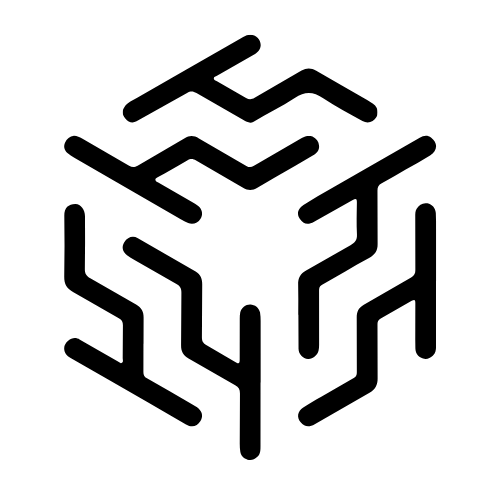Nvidia GTC 2025: AI Revolution Unveiled
Nvidia GTC 2025: A Deep Dive into the Future of AI and Technology
Nvidia's GTC (GPU Technology Conference) has become a landmark event for anyone interested in the future of technology. The 2025 keynote was no exception, delivering a series of groundbreaking announcements and insights that promise to reshape industries and redefine what's possible. This blog post delves into the key highlights of Nvidia GTC 2025, exploring the major themes, announcements, and their potential impact.
Table of Contents
-
Introduction to Nvidia GTC
-
Keynote Highlights
-
Blackwell Ultra and Vera Rubin
-
Nvidia Groot N1
-
Omniverse and Digital Twins
-
AI for Everything
-
-
Impact Across Industries
-
Autonomous Vehicles
-
Robotics
-
Healthcare
-
Scientific Research
-
-
The Future of Accelerated Computing
-
Conclusion
-
Keywords
Introduction to Nvidia GTC
Nvidia GTC is a global conference series that brings together developers, researchers, and technologists to explore the latest advancements in GPU technology and artificial intelligence. What started as a graphics-focused event has evolved into a premier showcase for cutting-edge innovations in AI, data science, high-performance computing, and more. GTC provides a platform for industry leaders to share their vision, unveil new products, and discuss the challenges and opportunities of the rapidly evolving tech landscape.
Keynote Highlights
The GTC 2025 keynote, delivered by Nvidia's CEO, Jensen Huang, was packed with significant announcements. Here are some of the most notable highlights:
-
Blackwell Ultra and Vera Rubin: The Next Generation of Computing Power
-
Nvidia unveiled its next-generation systems: Blackwell Ultra and Vera Rubin. Blackwell Ultra, set to launch in the second half of the year, promises a significant performance boost over the already powerful Blackwell architecture.
-
Vera Rubin, named after the pioneering astrophysicist, is slated for 2026 and will feature a massive increase in the number of GPUs, pushing the boundaries of AI computing.
-
These advancements underscore Nvidia's commitment to an annual rhythm of innovation, delivering increasingly powerful tools for AI development and deployment.
-
Key takeaway: The new architectures will provide the computational horsepower needed to drive the next wave of AI innovation, enabling larger, more complex models and faster processing times. This is crucial for applications ranging from drug discovery to climate modeling. The jump from Blackwell to Blackwell Ultra and then Vera Rubin shows that Nvidia is not slowing down.
-
-
Nvidia Groot N1: Powering the Robotics Revolution
-
A major announcement was the introduction of Nvidia Groot N1, a new AI model designed to power humanoid robots.
-
Groot N1 is designed to enable robots to understand and interact with the physical world, learn new skills, and adapt to changing environments.
-
This initiative aims to accelerate the development of advanced robotics applications, from manufacturing and logistics to healthcare and elder care.
-
Nvidia is making Groot N1 open-source.
-
Key takeaway: Nvidia is providing the foundational AI to power the next generation of robots. This could lead to a Cambrian explosion of new robotic applications, transforming industries and daily life. The focus on open-source development is also significant, as it could foster wider adoption and innovation in the robotics community.
-
-
Omniverse and Digital Twins: Building the Metaverse and Beyond
-
Nvidia continues to invest heavily in Omniverse, its platform for building and simulating virtual worlds.
-
The keynote showcased how Omniverse is being used to create increasingly realistic and sophisticated digital twins.
-
Digital twins are virtual replicas of physical systems or environments, used for simulation, optimization, and control.
-
Applications range from designing and testing new products to optimizing manufacturing processes and managing smart cities.
-
Key takeaway: Omniverse is becoming a critical tool for a wide range of industries. By enabling the creation of highly accurate and interactive digital twins, Nvidia is helping to bridge the gap between the physical and digital worlds. This has profound implications for how we design, build, and manage complex systems.
-
-
AI for Everything
-
A core theme of the keynote was the pervasive nature of AI.
-
Jensen Huang emphasized that AI is no longer limited to specific applications but is becoming a fundamental technology that will transform every industry and aspect of life.
-
Nvidia is providing the hardware and software tools to enable developers and organizations to integrate AI into their products and services.
-
Key takeaway: Nvidia's vision is a world where AI is ubiquitous, powering everything from self-driving cars and personalized medicine to smart homes and intelligent factories. This vision is driving the company's investments in a broad range of AI technologies, from chips and systems to software platforms and developer tools.
-
Impact Across Industries
The announcements at GTC 2025 have the potential to significantly impact a wide range of industries:
-
Autonomous Vehicles: Nvidia is a key player in the development of self-driving technology. The advancements in computing power and AI software are enabling more sophisticated perception, planning, and control systems for autonomous vehicles. The partnership with GM shows the strong momentum in this area.
-
Robotics: The introduction of Groot N1 could accelerate the development of more capable and versatile robots. This has implications for manufacturing, logistics, healthcare, and other sectors.
-
Healthcare: AI is transforming healthcare, from drug discovery and medical imaging to personalized medicine and robotic surgery. Nvidia's technology is powering many of these advancements.
-
Scientific Research: High-performance computing is essential for scientific research, enabling simulations and data analysis in fields such as climate science, astrophysics, and materials science. The new generation of Nvidia hardware will provide researchers with the tools they need to tackle some of the world's most challenging problems.
The Future of Accelerated Computing
Nvidia's GTC 2025 keynote reinforced the company's position as a leader in accelerated computing. By providing powerful hardware and software tools, Nvidia is enabling developers and organizations to push the boundaries of what's possible with AI and other compute-intensive applications. The company's commitment to an annual rhythm of innovation ensures that it will continue to drive progress in this field.
Conclusion
Nvidia GTC 2025 was a landmark event that showcased the rapid progress in AI and related technologies. From new generations of computing hardware to groundbreaking advancements in robotics and simulation, the announcements at GTC 2025 have the potential to transform industries and reshape the future. As AI becomes increasingly pervasive, Nvidia's role in providing the underlying technology will only become more critical.



